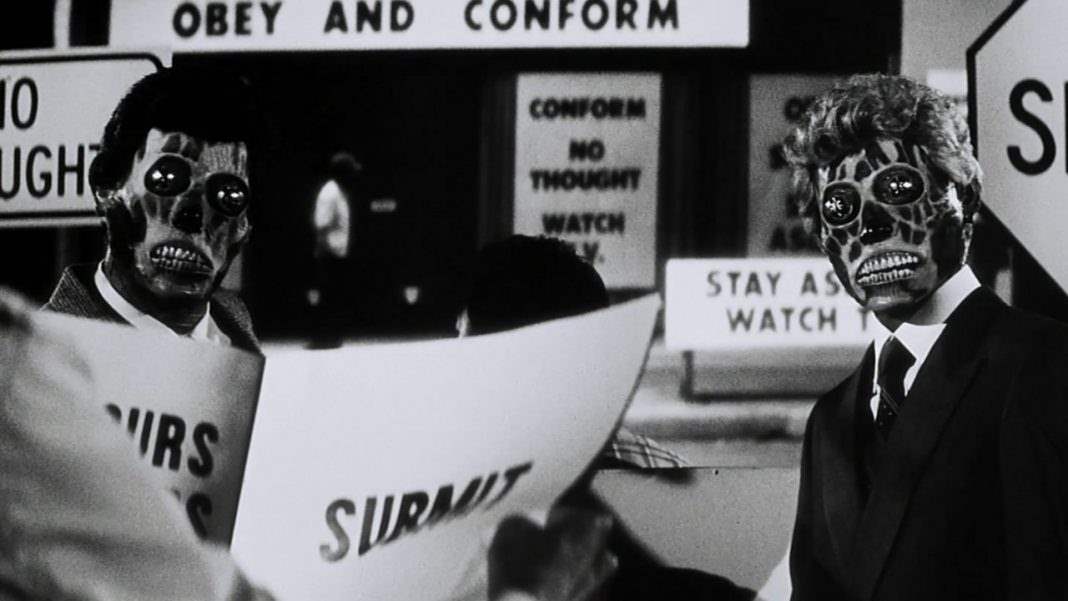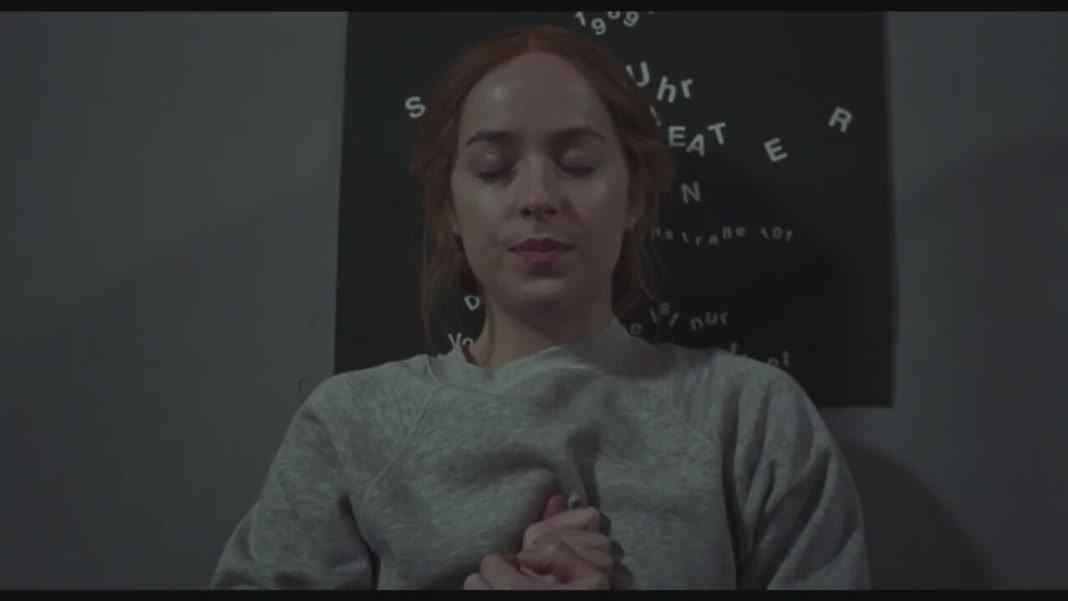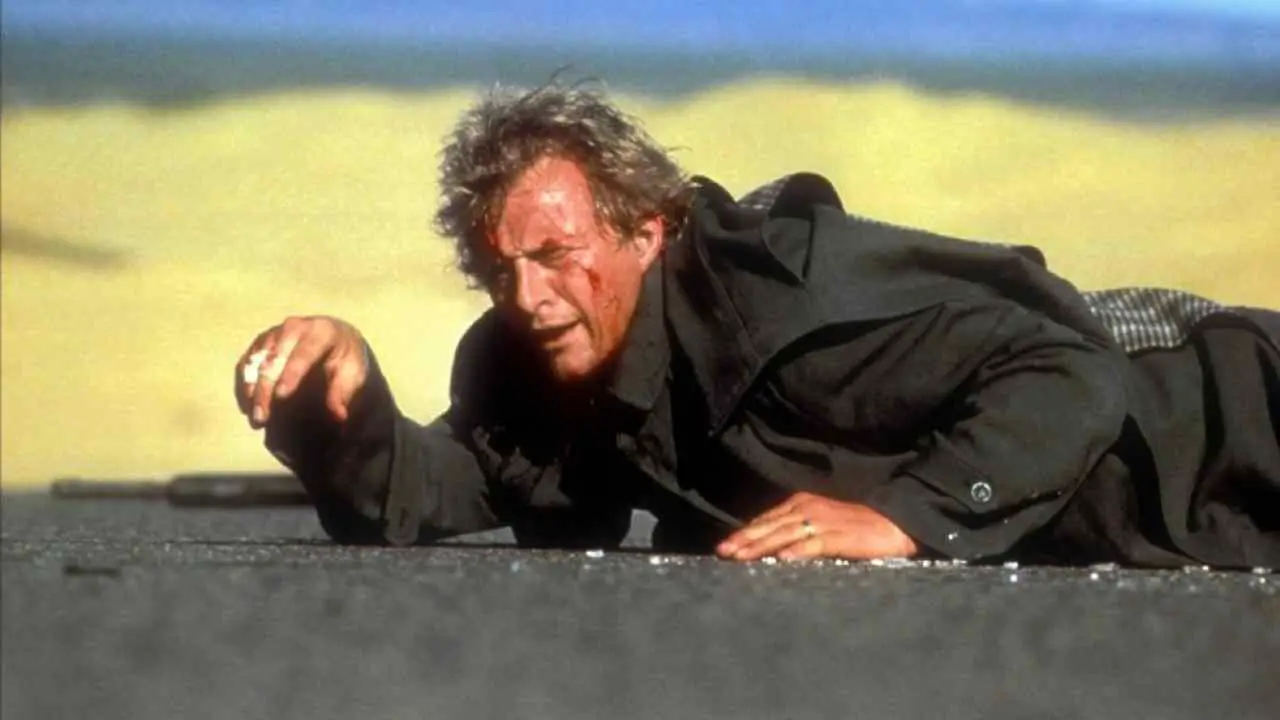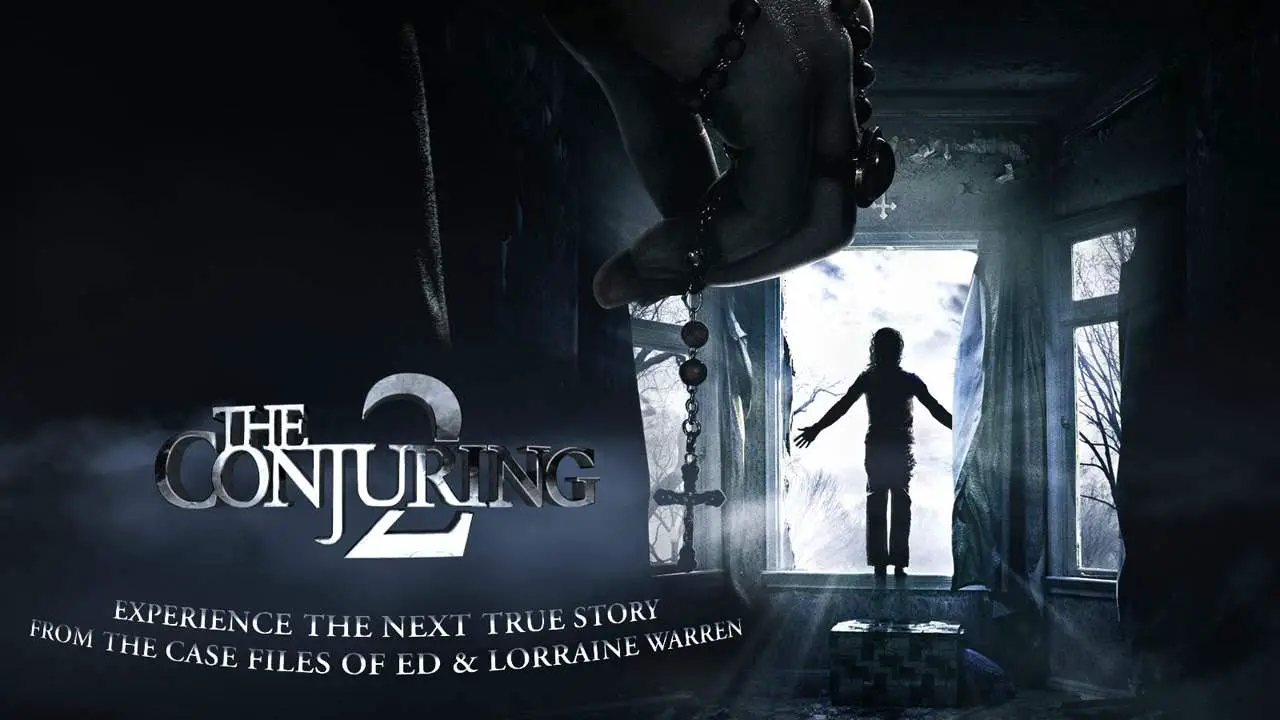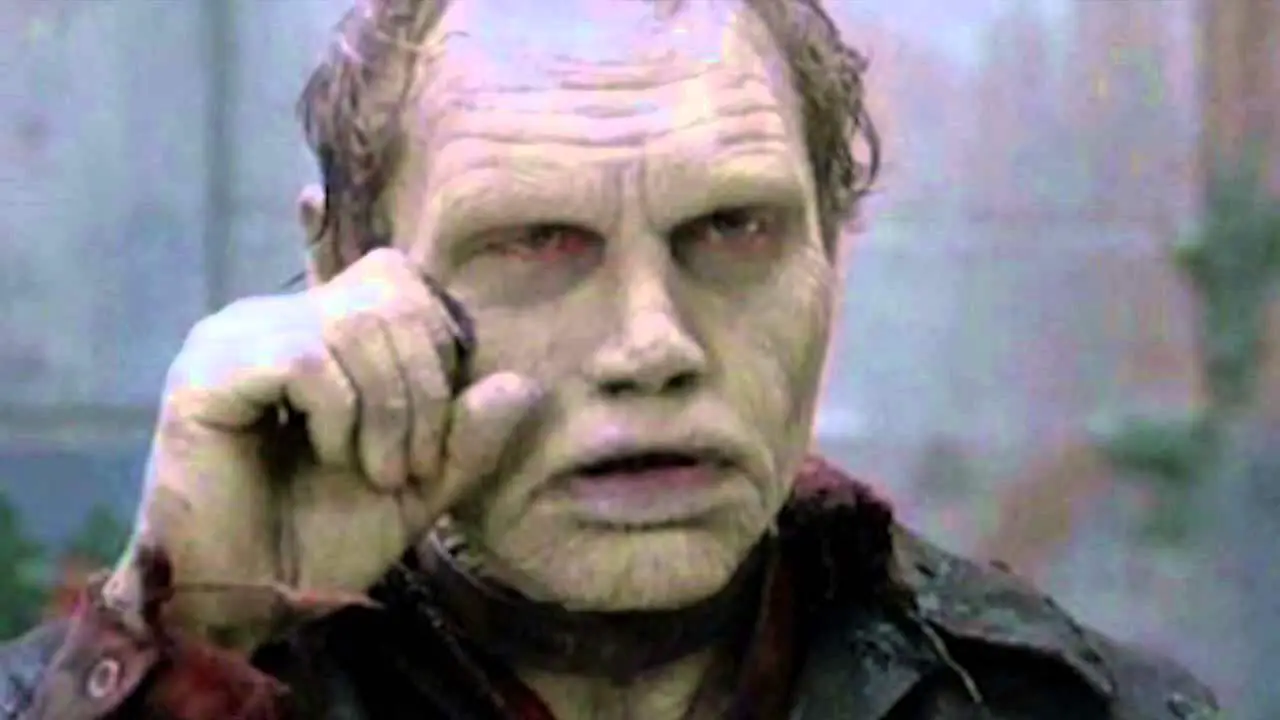When surveying history from a media-centric approach, it is too easy to fall prey to vast oversimplifications. In regards to horror cinema–-a genre that oftentimes sees fit to hold a mirror up to society at large–-it feels comfortable prescribing certain fears and anxieties to the people of any particular time and place. Just as those of the Victorian era were terrified by Bram Stoker’s Dracula and its warnings of homosexuality, evolutionary theory and transgressive religious practices, recent decades in American history show prominent aspects of the country’s paranoia reflected in their art. In the post-Manson 1970s, the rise of films focusing on random violence inflicted upon innocents was no coincidence–-tales of Ted Bundy, the Son of Sam, Ed Gein, the Zodiac Killer and countless others haunted the collective consciousness of the country and birthed The Texas Chainsaw Massacre, The Last House on the Left and countless others.
Applying the same logic to the decade to follow, it seems that in the 1980s, the watershed horror films branched off into generally less disturbing, but more varied material. Perhaps kicked off by the one-two punch of Friday the 13th and Just Before Dawn–-summer camp slashers that distilled the subject matter of Texas Chain Saw Massacre, The Hills Have Eyes, or Deliverance into a more immediately digestible format–-the decade in horror also occasionally took cues from Romero’s successful Dawn of the Dead, infusing the genre with dark humor, wild gore, and satirical social commentary.
The 1980s is similarly defined by the figure of Ronald Reagan, who served as President for nearly the entirety of the decade (1981-89). The conservative political interests that shaped the nation during the decade rear their ugly head in these allegorical, satirical and shocking takes on what really made 1980s America’s blood run cold.
They Live
Kicking off with perhaps the most obvious example, John Carpenter’s They Live had the benefit of coming at the tail-end of the decade. Crafting a blunt and over-the-top parody of contemporary American political infrastructure, Carpenter forgoes subtlety, both by presenting an allegory more thinly veiled than any he ever had, and also by making an action movie. In a kind of strange genre amalgamation and spoof upon the rise of action stars like Stallone and Schwarzenegger, the filmmaker casts wrestler “Rowdy” Roddy Piper as its hero. The result is watching a character discover the reality of a world-wide conspiracy of “higher beings” who suppress the human masses by keeping them docile (both a reflection of the growing class disparity and the increased power of the political elite).

For a less obvious (but equally in-your-face) horror satire, there is Brian Yuzna’s Society, a film impossible to truly discuss without spoiling it. I promise I won’t spoil it. Following an all-American teenager during his coming-of-age in Beverly Hills, Yuzna’s film is essentially a reworking of Invasion of the Body Snatchers (which in each successive remake seems to capitalize upon a newfound element of social commentary). Like They Live, Society explores the way that the obscene nature of American class disparity is often disguised by the political right’s treasuring of familial values and propagation of the idea that America is a strong and unified entity held together by brotherhood. The protagonist of the film is led to believe he is a part of his family, until it is revealed that he is instead of a “lesser” class of people, isolated from the cultural elite that he was led to believe supported him.
 A Nightmare On Elm Street
A Nightmare On Elm Street
Then there’s obvious films that aren’t so obviously social commentaries about 1980s America. However, it is of this critic’s opinion that A Nightmare on Elm Street may be the quintessential Reagan-Era allegory, not only because of its place among the pantheon of 80s pop culture and horror royalty, but because of the devilish subtlety of its satire. While the most obvious element of social commentary is the debunking of the belief that American suburbia provides a safety that other environments do not (the pervasive “it can’t happen here” idea) it is not the crux of the film’s socio-political content. The real threat in Nightmare on Elm Street is not Freddy Krueger, the literal killer, but instead the parents, and by extension the society that continues to dictate the way children are raised and instilled with beliefs by those who came before them. The vicious threat of Krueger is hidden from the children in a way akin to the 1980s panic about video nasties, “porno rock” and various other materials that could be seen as harmful to impressionable youth. Simultaneously, the sins of the past generation are passed onto the children without the knowledge or tools to tackle them. As the violence and cruelty of the parents is glossed over, the teenagers are treated with continued skepticism and hypocritical moralism, as even the viewers of the film try to draw relationships between the characters’ sexual transgressions and their eventual deaths (a concept that not only deals with traditional conservative American values about sex, but also identifies and deconstructs tropes that were becoming prevalent in the more conservative-bent slasher films of the 1980s). While perhaps not Wes Craven’s most perfect film, it is his most brilliantly and subtly subversive.
 Brain Damage
Brain Damage
This is a film that could have served just as well as a satirical allegory in the 1960s, but the aesthetic and heart of it beats with such a distinct 1980s flair: synthesizer music, punk fashion, body horror gore effects and all. Frank Henenlotter’s Brain Damage is a drug metaphor that replaces crack cocaine with a parasitic slug monster. Tapping into the excessive drug panic of the decade’s war on drugs, and legitimately lending gravitas to the life-destroying power of substance abuse, Henenlotter’s gritty New York shock film gives a distinctly Reagan-era slant on the idea of a drug movie. For just one example, the film touches on how in the 1980s dangerous drugs affected people of lower and upper classes–even well put together and intellectual individuals like those in the film’s opening sequence. It also features a singing parasitic slug monster, which makes it notable regardless of anything else.
 The Stuff
The Stuff
If there were to be one significant aspect of Larry Cohen’s films (beyond their guerilla bravado) it would be their ability to serve as keen and idiosyncratic barometers of the time in which they were made. His masterworks from the 1970s (namely Bone and Black Caesar) both comment upon while simultaneously existing within the framework of the blossoming Blaxploitation genre, exploring the way in which race is viewed onscreen and in the real world. With The Stuff he tackles 1980s consumerism, creating an extreme and exaggerated version of the type of ‘zombies-as-consumers’ metaphor Romero perfected with Dawn of the Dead. The titular substance is a sticky white material that when consumed brings great pleasure, but eventually turns the person into a zombie. Inundated with advertisements and the pure persuasive power of pleasure, the Stuff becomes a craze. The film exists as a commentary upon the way in which presentations of pleasure created by marketing can lead to an anesthetization of the masses in which the possibility of choice in free-market capitalism is in fact an illusion used to cover up the way in which modernity can so oft make us docile and brainless slaves to singular ideologies. Also people eat goo and they melt and it is really gross and fun.
 Day of the Dead
Day of the Dead
Speaking of Romero, one can’t not mention Day of the Dead, the director’s 80s opus. Just as the political anarchy of Night of the Living Dead gave way to the excessive violence of Dawn so does the bloodshed finally collapse into Day of the Dead, where the dejected characters, faced with the imminent threats of world destruction and bodily disease, regress into a lifeless state where the primary debate is whether or not to give up for good. Of particular note is a sequence in which the characters discuss whether it is possible to go on living, all the while sitting in a self-constructed tacky fabrication of normalcy, complete with plastic grass, lawn chairs and suburban decorations. The film is one which posits that though the societal issues that have always plagued humanity have not gone away, we have in modernity been quick to ignore them (to hide underground as the characters do). While Dawn of the Dead’s critique of consumerism remained relevant (as it still does to this day) the distinctly 80s feeling of Day of the Dead shined through in its aesthetical qualities and furthermore in how its morbid focus on underground shelters seems to tap into the fear of nuclear destruction rekindled by Reagan’s push against the USSR at a frightening peak period in the Cold War.
 Return of the Living Dead
Return of the Living Dead
Zombies and Cold War paranoia both also feature in Return of the Living Dead, a film with one of the boldest endings in horror history, where the government drops a bomb on the film’s setting, attempting to kill the zombies, and in effect murders everyone else there, too. And it’s all set to a bitchin’ synth score. The ending even references President Reagan, both predating his air strikes on Libya and perhaps referencing his troubling practice of ignoring the AIDS epidemic despite being well aware of it. Just as the government seemed intent to ignore those affected by the virus, those “less than 4000 dead” at the end of Return of the Living Dead (punks, outcasts and lower class people) are viewed as disposable by the powers that be.
 The Stepfather
The Stepfather
Not often discussed, and furthermore underrated, 1987’s The Stepfather stars Terry O’Quinn as a man driven to continually kill by an unhealthy and unrealistic idealization of the perfect American family that he repeatedly fails to attain. The political right’s idealization of 1950s suburbia runs rampant through the film, with O’Quinn’s character of the age where he likely grew up in the 50s. He is now failing to actualize the dreams of the perfect family he feels promised by societal wishful thinking and nostalgia for the cloudy past. Confronted by modern behaviors that he perceives to be corrupt and immoral, his murderous intent is left unnoticed by the film’s other characters due to the clean-cut, picket fence exterior that he shows to the world.
 Parents
Parents
That strain of 1980s nostalgia for 50s suburbia also surfaces in Bob Balaban’s horror comedy Parents, about a young boy in the 1950s who discovers that his parents are cannibals. Here the evil of consumption is stressed not only by the literal cannibalism, but the metaphorical consumption and consumerism of the suburban dream of owning things. From cars to stoves to furniture to other human beings, each piece of Americana in the house is filled with the terrifying subtext of consumption as a means of exerting power. This is a film that can be compared to Blue Velvet in how it details the way suburban ideals contrast with the isolated and insular niche communities they actually form. While the desire to have privacy oftentimes presents itself as a matter of safety, it can just as easily be a dangerous and claustrophobic manner of positioning yourself within the most dangerous of situations, where no one can help. Here the child is in danger from his own family. In addition, he is presented with a model of morality that is deeply flawed, a similar concept as those expressed in A Nightmare on Elm Street and Society.
 Poltergeist
Poltergeist
Speaking of suburban horror, the necessity of touching upon Tobe Hooper’s Poltergeist at a time like this is paramount. From the manner in which it establishes suburbia as a breeding ground for hostility that covers up its own flaws with a shiny exterior (this time that latter point is quite literal in regards to the haunted house being built on top of a burial ground). Also worth mentioning is the use of a television as a prominent element of the film, including the idea that harmful forces can reach us through the connected network of televisual communication. Just as the house is connected to the spirit world through it, so are families all around the country bound together by the information they are fed via television. MTV, anyone?

